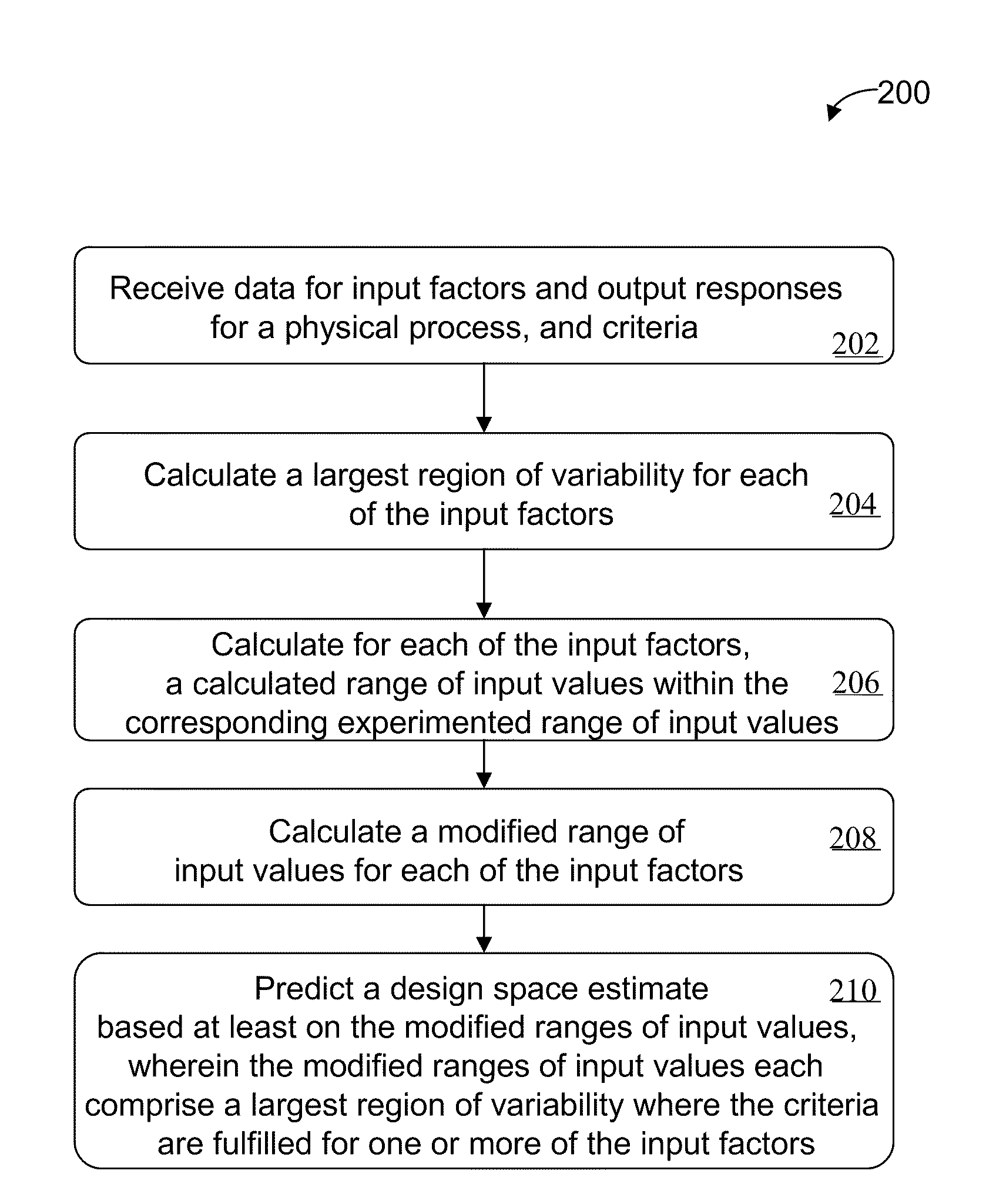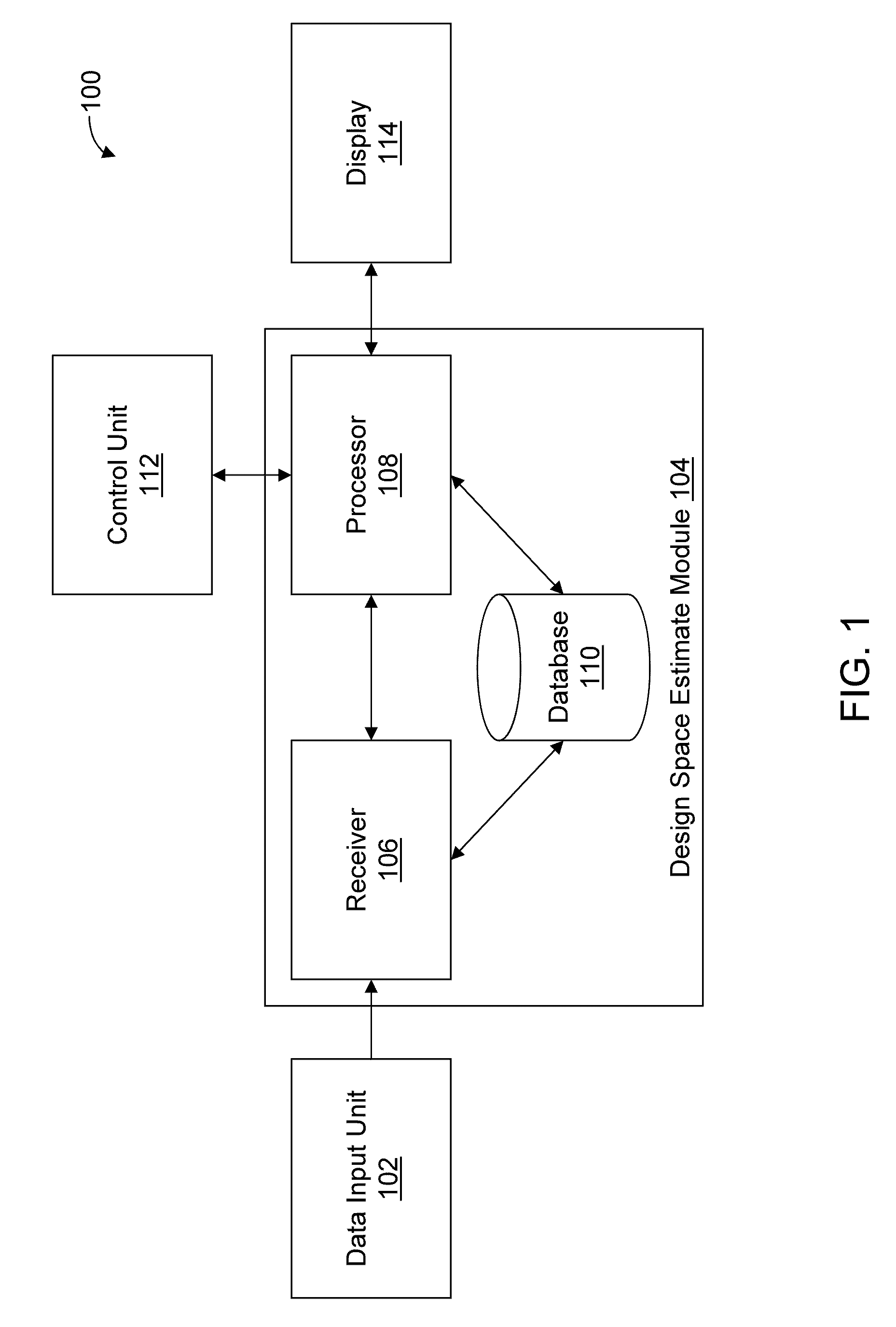Methods and apparatus for automated predictive design space estimation
a technology of design space and method, applied in adaptive control, process and machine control, instruments, etc., can solve the problems of inability to automatically provide for acceptable regions, increased complexity of manufacturing processes, and increased difficulty in meeting process and material specifications
- Summary
- Abstract
- Description
- Claims
- Application Information
AI Technical Summary
Benefits of technology
Problems solved by technology
Method used
Image
Examples
Embodiment Construction
[0036]In some exemplary embodiments of the invention, a predictive design space estimate (PDSE) is determined for a physical process (e.g., a manufacturing process, industrial process, or a design project) based on input factors, output responses, and various criteria associated with the input factors and / or the output responses. The PDSE includes a distribution of output response values for each of the one or more output responses. The PDSE also includes one or more largest regions of variability for each input factor. In some embodiments, the PDSE includes an individual largest region of variability and a combined largest region of variability for each input factor, both of which are calculated based on the distribution of output response values to satisfy the criteria associated with the input factors and / or the output responses.
[0037]FIG. 1 is a schematic illustration of a system 100 for performing automated predictive design space estimate, according to an illustrative embodime...
PUM
 Login to View More
Login to View More Abstract
Description
Claims
Application Information
 Login to View More
Login to View More - R&D
- Intellectual Property
- Life Sciences
- Materials
- Tech Scout
- Unparalleled Data Quality
- Higher Quality Content
- 60% Fewer Hallucinations
Browse by: Latest US Patents, China's latest patents, Technical Efficacy Thesaurus, Application Domain, Technology Topic, Popular Technical Reports.
© 2025 PatSnap. All rights reserved.Legal|Privacy policy|Modern Slavery Act Transparency Statement|Sitemap|About US| Contact US: help@patsnap.com



